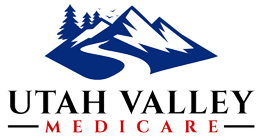Medicare Part D
Part D prescription drug plans are offered by private companies contracted by Medicare for this purpose. Part D can be acquired within a Medicare Advantage Prescription Drug Plan (MAPD) or as a stand-alone plan. Within a MAPD plan, the Part D plan may or may not have a monthly premium. As a stand alone plan, premiums can run as low as $7/mo for a basic plan and as high as $100/mo (or more) for plans with enhanced coverage. Which type of plan you enroll in should be determined by a thorough analysis of your prescription drug needs and which type of coverage you desire. Like Part B, people who earn more could have an IRMAA added to the Part D plan premium.

Why is Medicare Part D Important?
Medicare Parts A & B, or Original Medicare, cover drugs administered during hospital or doctor visits but not medications you are prescribed to take after those visits have concluded. Many people who qualify for Medicare Parts A & B choose to supplement that coverage with a Medicare Part D prescription drug coverage plan.
What Does Medicare Part D Cover?
Medicare Part D plans offer coverage for common generic and brand name prescription drugs, with the government setting guidelines for what medications Medicare Part D plans must cover. However, the prescription drugs covered do vary from plan to plan. Be sure to verify that your prescriptions are covered in each plan’s list of covered medications.

6 ways to reduce Medicare prescription costs
Is there anything else that can help reduce the cost of prescription medications? Here are six suggestions:
1. Consider switching to generic drugs.
These are often less expensive than brand-name drugs. If you’re taking a brand-name drug, ask your doctor about generic drugs.
2. Think about ordering medications online.
In some cases, this may be more cost-effective. The FDA has a list of tipsTrusted Source for safely buying medications online.
3. Choose a plan with additional coverage during the donut hole.
Some Medicare plans may provide additional coverage while you’re in the donut hole. However, you may be subject to higher premiums.
4. Look into state pharmaceutical assistance programs.
Many states offer programs that can help with the cost of your prescriptions. Medicare has a search tool to find programs in your state.
5. Check for pharmaceutical assistance programs.
Many pharmaceutical companies offer assistance programs for people that need help with the cost of their medication.
6. Apply for Medicare Extra Help.
Individuals that have Medicare drug coverage and have limited income and resources may qualify for the Medicare Extra Help program. This helps to pay for premiums, deductibles, and copayments associated with a Medicare drug plan.
The Takeaway
The Medicare donut hole is a coverage gap in Plan D prescription coverage. You enter it after you’ve passed an initial coverage limit.
There are a variety of things that you can do to help bring down the cost of prescriptions. These include switching to generic drugs, having extra coverage for the donut hole, or using an assistance program.
When selecting a Medicare prescription drug plan, verify that a plan covers your medications. It’s always a good idea to compare multiple plans to find the one that’s right for your individual needs.

